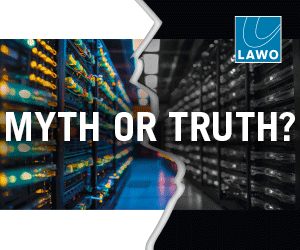Mohammed Saifi, Broadcast Engineering Manager, twofour54, outlines the varlous causes of interference and analyses the comparative effectiveness of measures to fight interference
As satellite communication technology evolves and grows continuously, satellite networks are increasingly subject to radio frequency interference from a variety of ground transmitters.
Interference has become a major cause of the impairment and degradation of satellite services.
Radio frequency interference is often unintentional, resulting from different scenarios such as operational mistakes, pointing inaccuracy or pointing to a wrong satellite, cross polarisation optimisation issues, carrier saturation and intermodulation interference, equipment malfunctions and terrestrial interference sources such as from microwave links and radar systems.
In addition to the above, interference can be a consequence of deliberate jamming for political reasons or due to illegal use of the available satellites’ contribution capacities.
In all cases, identifying the interference source and clearing the same is of priority for the satellite industry.
Need to embed carrier identifier
As a counter measure, there is a need to embed a carrier identifier (CID) into the carrier itself, to expedite the process of precisely locating the interference source. Carrier ID allows interference sources to be recognised and identified by adding carrier specific information within each carrier. Such information includes: client name, contact details, transmission site longitude, transmission site latitude, modulator manufacturer, and the modulator MAC address.
The satellite interference reduction group (SIRG) has suggested that all new satellite transmission equipment should have Carrier ID capability by January 1, 2015. The group has agreed to insert the ID in the Network Information Table (NIT) within the transport stream (TS). However, when the carrier that is NIT ID-enabled is suffering from interference, the NIT is no longer able to be read, unless the carrier of interest is shutdown.
Need for more robust Carrier ID technology
More robust Carrier ID technology was developed to overcome this challenge called MetaCarrier ID. MetaCarrier means that there will be an additional carrier associated with the carrier of interest describing it. Hence, all the carrier specific information will be embedded within the MetaCarrier using spread spectrum techniques, without adding a significant noise to the carrier of interest. In cases of severe interference, MetaCarriers can be extracted from both the carrier of interest and the interfering carrier.
Deliberate jamming
If the interference is due to geopolitical reasons, locating the interference source is possible, but removing it is impossible without political intervention.
The interfering signal is transmitted to the primary satellite via the antenna’s main lobe. However, a portion of the transmitted signal will hit the adjacent satellite through the antenna’s side lobe. Assuming that the adjacent satellite operates in the same frequency range of the primary satellite and has an overlapping uplink beam coverage, the signals travel over two different satellite links and can be received and analysed at two monitoring ground stations equipped with spectrum analysers and geolocation equipment.
In order to locate the source of the interference, the two signals will be correlated to determine the Differential Time Offset (DTO) and the Differential Frequency Offset (DFO) resulting from the fact that, the two signals went through totally different paths. After having the DTO and DFO values, simultaneous measurements will be conducted on a reference signal and as a result, the interference source location can be identified. Using bigger dishes for deliberate interference will make the process of geolocation more difficult, due to the fact that, the antenna’s directivity will be higher and hence, side lobes will be minimised.
Spot beams uplink to counter interference?
In theory, the satellite can be designed to have spot beams uplink, limiting the territories that can uplink to the satellite and hence, reducing the probability of both unintentional and deliberate jamming.
The drawback of such a design is that the cost of delivering the traffic to the spot beams areas will be high, as the traffic should be contributed to these areas via SDH networks, MPLS networks or even through satellite contribution capacities. Research is being conducted to use free space optics laser technology in satellite communications. The performance of the free space optics is not affected by electromagnetic interference and it has very narrow beams, hence, is immune to interference.
Although the satellite industry is mature enough, it is really surprising that there has been no provision of a universal identification of carriers. It is never too late, Carrier ID technology will provide the ability to identify the interfering source and hence, significantly reduce the time needed to clear the interference situation.












































































